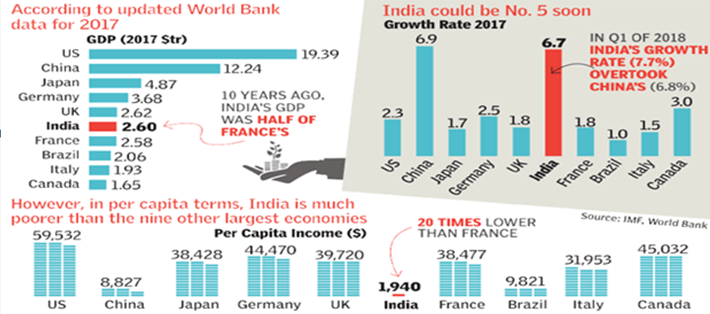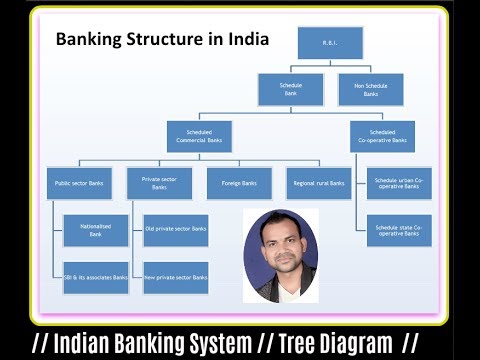Contents:


The SMA helps to identify support and resistance prices to obtain signals on where to enter or exit a trade. The exponential moving average gives more weight to recent prices in an attempt to make them more responsive to new information. To calculate an EMA, the simple moving average over a particular period is calculated first. Investors may choose different periods of varying lengths to calculate moving averages based on their trading objectives. Shorter moving averages are typically used for short-term trading, while longer-term moving averages are more suited for long-term investors. One of the most popular simple moving averages is the 200-day SMA.

In this, the user provides more weight to the new data points, therefore decreasing exponentially for the previous data values. When the simple moving median above is central, the smoothing is identical to the median filter which has applications in, for example, image signal processing. The Moving Median is a more robust alternative to the Moving Average when it comes to estimating the underlying trend in a time series. As a result, the Moving Median provides a more reliable and stable estimate of the underlying trend even when the time series is affected by large deviations from the trend. Additionally, the Moving Median smoothing is identical to the Median Filter, which has various applications in image signal processing. Statistically, the moving average is optimal for recovering the underlying trend of the time series when the fluctuations about the trend are normally distributed.
Suppose you want to know the average of sales of last 3 products of your column. To do this, you need the formula to calculate the moving average. And the Average function can do this along with the OFFSET and the COUNT functions. With the dataset shown below, we will calculate the moving average of Sales at the interval of 3 with Excel’s Data Analysis Tool. In this phase, you will learn how to calculate moving average with Excel tools, formulas etc.
Limitations of Moving Averages
Notice how the cell reference moves in the average formula, eliminating the oldest to include the latest data points. This scan looks for stocks with a falling 150-day simple moving average and a bearish cross of the 5-day EMA and 35-day EMA. The 150-day moving average is falling as long as it is trading below its level five days ago. A bearish cross occurs when the 5-day EMA moves below the 35-day EMA on above-average volume. This scan looks for stocks with a rising 150-day simple moving average and a bullish cross of the 5-day EMA and 35-day EMA.
Choosing the right type of moving average depends on your trading objectives. The formula for calculating the EMA tends to be complicated, but most charting tools make it easy for traders to follow an EMA. In contrast, the SMA applies equal weighting to all observations in the data set. It is easy to calculate, being obtained by taking the arithmetic mean of prices during the time period in question.
Please do notice how the crossover system keeps the trader away from the 3 unprofitable trades. A longer moving average takes more data points to calculate the average, and hence it tends to stay away from the current market price. Average Vs Weighted AverageIn Excel, the words average and weighted average are different. A weighted average, on the other hand, is an average calculated in the same way but with a weight multiplied with each data set. Exponential moving averages have less lag and are therefore more sensitive to recent prices – and recent price changes. Exponential moving averages will turn before simple moving averages.
Calculating an average at specific intervals smooths out the data by reducing the impact of random fluctuations. This makes it easier to see overall trends, especially in a chart. The larger the interval used to calculate a moving average, the more smoothing that occurs, since more data points are included in each calculated average.
CBSE Class 12 Analysis
An SMA is backward-looking, as it relies on the past price data for a given period. It can be computed for different types of prices, i.e., high, low, open, and close. The exponential moving average is a type of moving average that gives more weight to more recent trading days. This type of moving average might be more useful for short-term traders for whom longer-term historical data might be less relevant. A simple moving average is calculated by averaging a series of prices while giving equal weight to each of the prices involved.
There is also a triple crossover method that involves three moving averages. Again, a signal is generated when the shortest moving average crosses the two longer moving averages. A simple triple crossover system might involve 5-day, 10-day, and 20-day moving averages.
An EMA does serve to alleviate the negative impact of lags to some extent. Because the EMA calculation places more weight on the latest data, it “hugs” the price action a bit more tightly and reacts more quickly. This is desirable when an EMA is used to derive a trading entry signal. If you want to start the formulas from the first row of the range, there won’t be enough data to calculate a complete average because the range will extend above the first row. See the picture above where we got the moving average, 700, of the last 3 values of Column C of our dataset. You will get the Moving Average of the data provided along with an Excel trendline showing both the original data and the moving average value with smoothed fluctuations.
Guppy Multiple Moving Average (GMMA): Formulas and Calculations – Investopedia
Guppy Multiple Moving Average (GMMA): Formulas and Calculations.
Posted: Sun, 26 Mar 2017 02:14:18 GMT [source]
Therefore, you must calculate the moving average based on the given numbers. Moving averages are typically based on price data, and specifically closing price data. However, this indicator can be applied to other types of price data , volume data, or even other indicators.
What Is the Difference Between a Simple Moving Average and an Exponential Moving Average?
Traders use these EMAs and WMAs over SMAs if they are concerned that the effects of lags in data may reduce the responsiveness of the moving average indicator. You may think of a moving average for forecasting stocks or investments. But you can also use it to see trends for inventory, sales, or similar data. Without equations or functions, you can calculate a moving average easily in Excel. First, we must compute the simple moving average for a given period, followed by the multiplier for weighing the exponential moving average.
With that interpretation, investors look to buy when the price is near the rising EMA and sell when the price is near the falling EMA. It will give you the moving average of the last 3 values in a column. As shown in the image below, pick the 3rd cell and simply write a simple AVERAGE formula to calculate the sales value with an interval of 3. To use the calculator, simply input the data set, separated by line breaks, spaces, or commas, and click on the “Calculate” button. In fact, if your only requirement is the moving average value , the best approach to fetch the output is by using the Average formula rather than using the Data Analysis Toolpak. The derivation and properties of the simple central moving average are given in full at Savitzky–Golay filter.
At the top of the Moving Average window, enter the Input Range into the corresponding box. You can also click inside the box and then drag through your data range. Optionally, you can check the box for “Labels in First Row” and include an Interval. From what I can see from the chart, clearly the trade is in favor of a long position. This is because the MA cross over has already happened and it seems like a trend is being formed. I would wait for a retracement on low volumes to enter a position.
Traders use simple moving averages to chart the long-term trajectory of a stock or other security, while ignoring the noise of day-to-day price movements. This allows traders to compare medium- and long-term trends over a larger time horizon. For example, if the 200-day SMA of a security falls below its 50-day SMA, this is usually interpreted as a bearish death cross pattern and a signal of further declines.
When you finish setting up the moving average click “OK” and you’ll see the output. You have the values beginning in the cell you selected for the output. If you selected the Chart Output, you’ll have a handy line graph displaying the data as well. Irrespective of the asset class for intra day trading I would advice 10 or 15 mins charts..as longer the time duration is longer, the more reliable is the trading signal. Going by the same logic, I would advice you to use slightly longer term MA cross over for better accuracy. Notice, when the markets were moving sideways, MA suggested at least 3 trading signals.

Exponential Moving Average is a method where the user gives more weight to the latest data set, and further, the weights keep decreasing exponentially for previous data values. The next option if to select whether you want to represent the data using a chart or not. If you want a chart to display the output of your moving average, tick the Chart Output check box. Other price data such as the opening price or the median price can also be used. At the end of the new price period, that data is added to the calculation while the oldest price data in the series is eliminated. Other weighting systems are used occasionally – for example, in share trading a volume weighting will weight each time period in proportion to its trading volume.
As you can see, we have included the latest data and discarded the oldest data to calculate the 5-day average. On 29th, we would include 29th data and exclude 22nd data, on 30th, we would include 30th data point but eliminate 23rd data, so on. Moving forward, the next day, i.e. 28th July we have a new data point. This implies now the ‘new’ latest 5 days would be 22nd, 23rd, 24th, 25th and 28th. We will drop the data point belonging to the 21st as our objective is to calculate the latest 5-day average. The Guppy Multiple Moving Average is a technical indicator used to anticipate a breakout trend in the price of an asset.
The larger the interval period is to calculate the moving average, the more fluctuations smoothing occurs, as more data points are included in each calculated average. A moving average is marked on a stock chart by a line, and it represents the average price of a given stock over a period of interest. It serves to smooth over the changes in a stock price so that the overall trend becomes more apparent.
- Note that MACD and the PPO are based on exponential moving averages and will not match up with simple moving averages.
- The golden cross occurs when a short-term SMA breaks above a long-term SMA.
- The only difference between Exponential Moving Average and Weighted moving average is that with WMA, you can allocate weights on the basis of any preferred criteria.
- The most popular moving averages for longer-term investors are the 50-day and 200-day SMAs.
The longer moving average sets the tone for the bigger trend and the shorter moving average is used to generate the signals. One would look for bullish price crosses only when prices are already above the longer moving average. For example, if price is above the 200-day moving average, chartists would only focus on signals when price moves above the 50-day moving average. Obviously, a move below the 50-day moving average would precede such a signal, but such bearish crosses would be ignored because the bigger trend is up. A bearish cross would simply suggest a pullback within a bigger uptrend.
- Moving averages are typically based on price data, and specifically closing price data.
- For a number of applications, it is advantageous to avoid the shifting induced by using only “past” data.
- Since in our data, the first Row contains a header, so we have ticked it.
- This chart shows Oracle with the 50-day EMA, 200-day EMA and MACD.
- Further, a bullish crossover indicates an upward momentum that occurs when a short-term moving average crosses above a long-term moving average.
If the first Row of your input range contains header or text data, check the checkbox for Labels in the first Row, as it helps Excel identify or describe your text data. Since in our data, the first Row contains a header, so we have ticked it. Next, we will specify the input range text box of our dialog window. In the input range text either select the worksheet range using your cursor or manually enter the range address. A major drawback of the SMA is that it lets through a significant amount of the signal shorter than the window length. This can lead to unexpected artifacts, such as peaks in the smoothed result appearing where there were troughs in the data.
Why the 50-Day Simple Moving Average Is Popular Among Traders – Investopedia
Why the 50-Day Simple Moving Average Is Popular Among Traders.
Posted: Mon, 18 Apr 2022 07:00:00 GMT [source]
In this example, the recent simple moving average formula point was given the highest weighting out of an arbitrary 15 points. The lower value from the weighted average above relative to the simple average suggests that recent selling pressure could be more significant than some traders anticipate. For most traders, the most popular choice when using weighted moving averages is to use a higher weighting for recent values. Moving averages are favored tools of active traders to measure momentum. The primary difference between a simple moving average, weighted moving average, and the exponential moving average is the formula used to create the average.
When the current row number is less than 3, the formula returns #N/A. This mimics the behavior of the Analysis Toolpak version of Moving Average, which outputs #N/A until the first complete period is reached. Looking at the graph above, we can see that when the price surpasses the SMA line, the prices often trend upward for some time. However, when the price intersects and falls below the SMA line, we see a downtrend in prices for a bit as well. Compared with Day 10’s closing price of $24, the 5-day SMA of $18.60 was a lot closer than the 10-day SMA of $14.90. It is once again because the 5-day SMA is a shorter period, which follows the price more closely, whereas the 10-day SMA considers more historical data.

